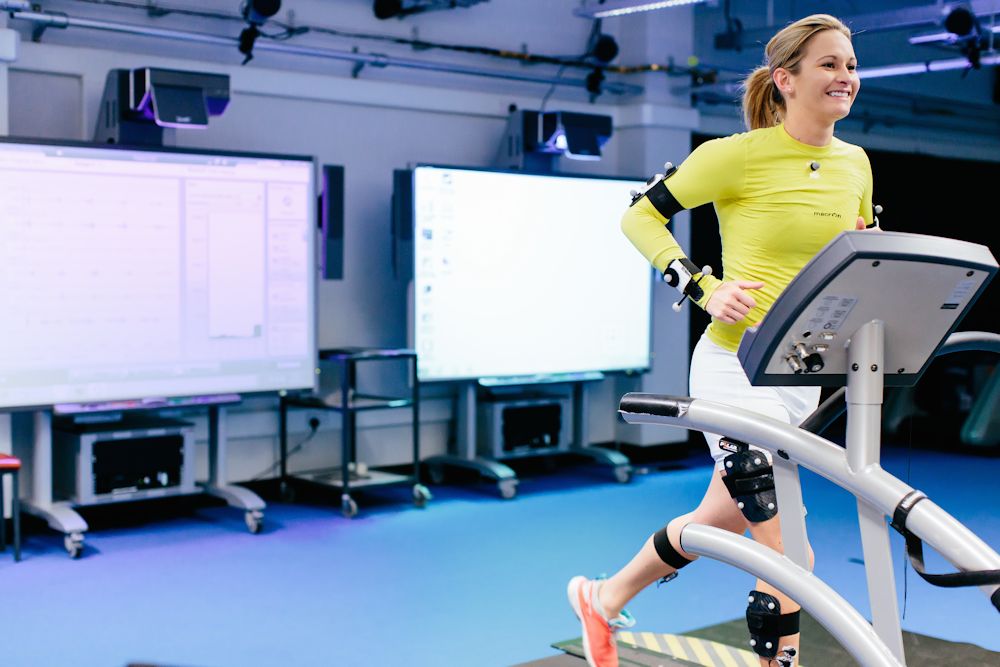Sarah Carter, Sport and Exercise Science with Industrial Placement Year
What have been the highlights of the course/programme so far?
Sport & Exercise Sciences at Leeds offer a wide range of state-of-the-art facilities, which allows for opportunities to test your own/ others physiological adaptations to exercise (i.e. breathing/cardiac responses, blood concentrations, and muscular alterations); as well as conduct biomechanical analysis looking at an individual’s gait patterns, ground reaction force and velocity/ acceleration data and much more. Being able to have access to such technology has allowed me to analyse and improve my own performance in sport.
Where did you do your placement year & what was your job role?
As part of my degree, I did a year in industry at Sports and Biomedical Engineering Laboratory, Brisbane, Australia; where I was a Sports Engineer Researcher working on several different projects.
What were your key responsibilities? How did these develop as your placement progressed?
Certain roles included analysing athletes, setting up lab protocols, attending meetings with sport governing bodies as well as co-workers, presenting research and articulating findings, and daily running of the website. As my time in the placement progressed my responsibilities grew; I was given administrator responsibility in designing the new website and updating the company’s blog weekly. Furthermore, as I met more colleagues and thus founded new relationships, I was given more opportunities to work in other exciting projects which sometimes involved travelling to outer places.
What opportunities has your industrial placement opened up to you?
I’ve been lucky enough to be invited to take a PhD at Griffith University, Brisbane in a project created by myself and the supervisor. Yet, not only did the industrial placement open up opportunities, but when travelling I also met many new exciting people who offered me various work roles (if I ever wanted to go back and live in Australia) which is comforting news if I ever wanted to go backpacking again while I’m still young.
What were the most enjoyable and most challenging aspects of your placement?
The most enjoyable aspects of my placement was having free-reign with the direction of certain projects, analysing sport performance in a range of sports, alliancing with other schools and disciplines, and working in the office very much independently. In addition, my co-workers were so friendly, regularly inviting me on bush walking excursions, camping trips, and parties. The most challenging aspect of the placement was learning how to use some of their software systems and presenting in front of others. However, this became much easier as the placement went on and the ‘Aussies’ are the friendliest people if you ever feel the need to ask for help.
We want other students at Leeds to know what an exciting opportunity the year in industry is. What was the real highlight for you?
Taking a year in industry was by far the best experience I’ve ever had, and has really helped in my final year academic studies/ grades. I would recommend it to anyone – I learnt valuable life skills whilst travelling, established international co-workers/ friends and experienced first-hand what it’s like to work in the sports research industry.
What are your ambitions for the future? Do you have specific career plans? Has the University (careers centre/lecturers etc.) helped you with these goals in any way?
I intend to become a performance analyst; my next goal to achieving this career path is to get a Phd Scholarship in Sport Engineering at Griffith University, Australia. While abroad I made great networks and liaised with sport national governing bodies and have established this link with some of the Leeds University Academics. We now have a partnership between Leeds University and Griffith University where students can apply for internship opportunities between establishments. I intend to keep these associations/ networks to help in my long-term success.
